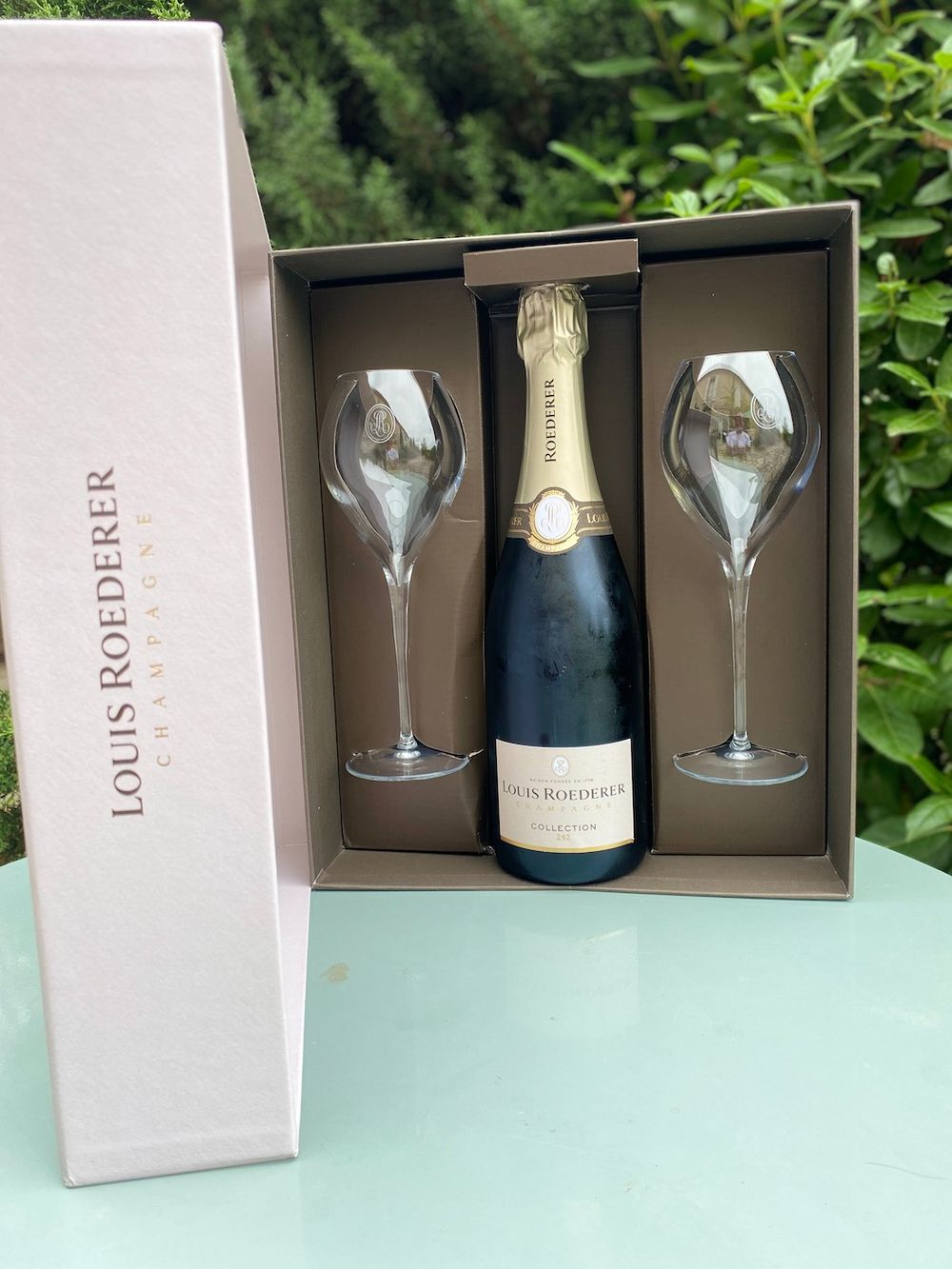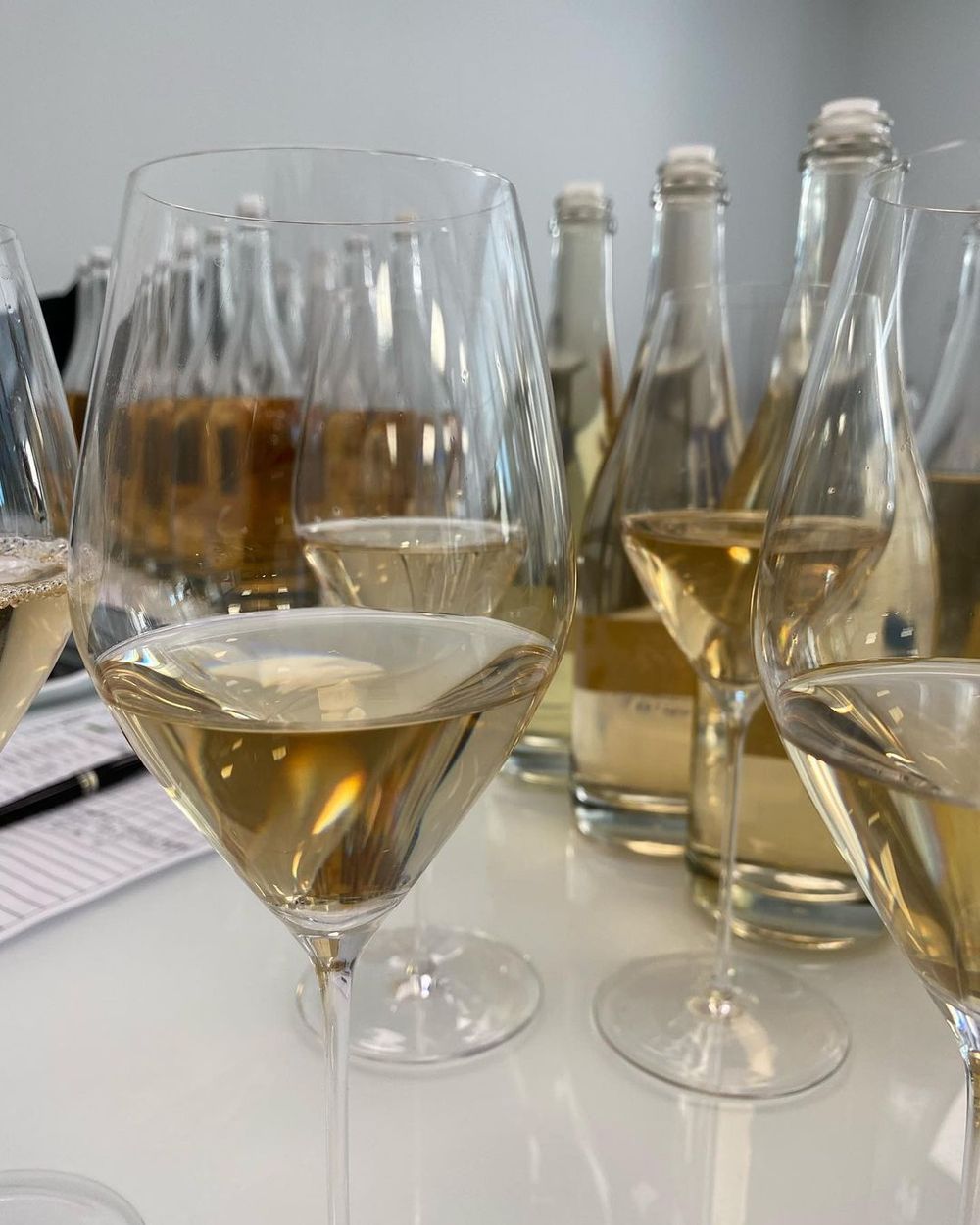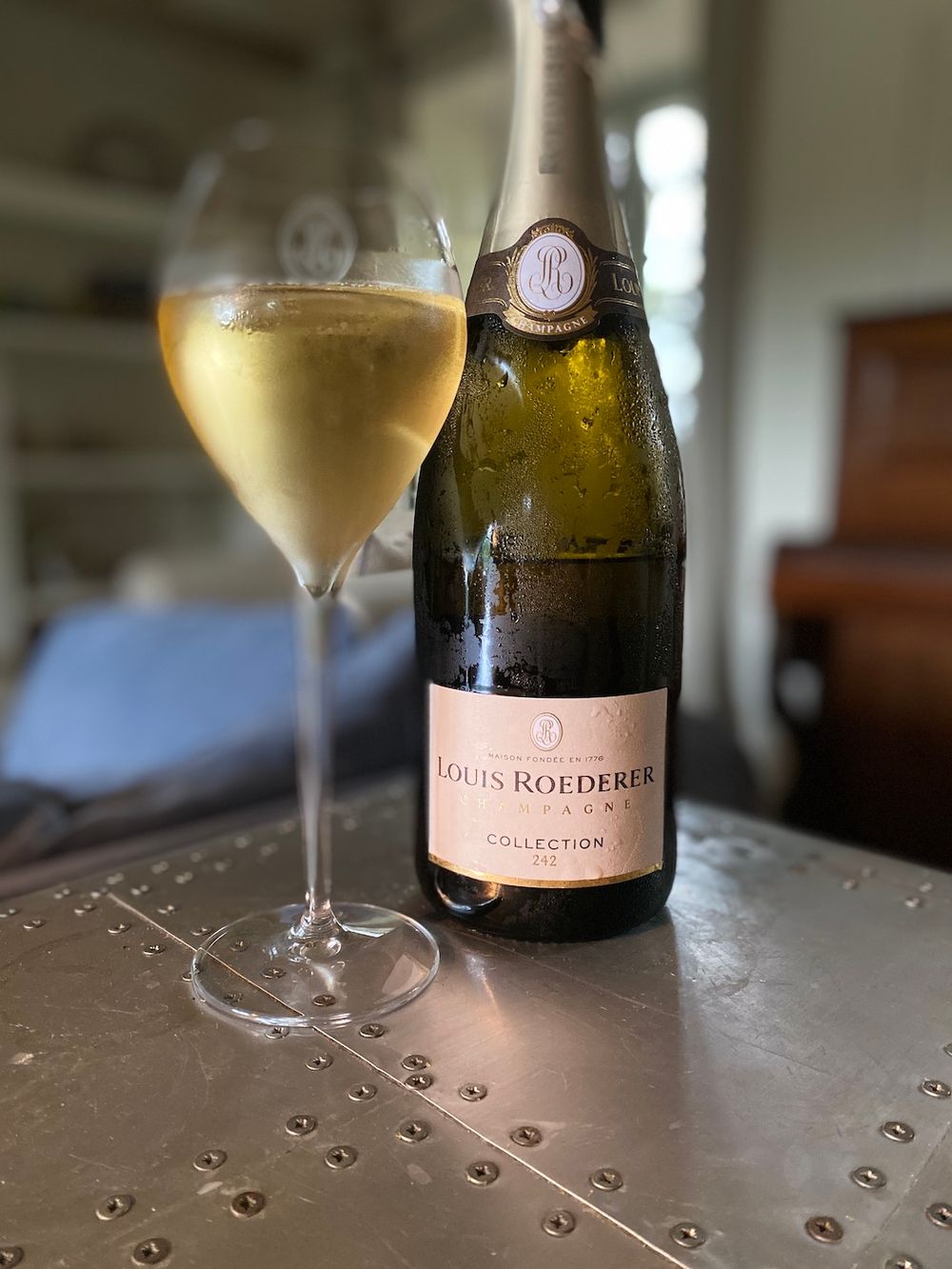“The price has gone up £4 in the UK taking the new price to £52, a tactically shrewd move which places Collection 242 at a higher price than the non-vintage Champagnes of the other Grandes Maisons,” writes Dean.
When Louis Roederer launches its new multi-vintage Louis Roederer Collection 242 this month, cellar master Jean-Baptiste Lécaillon is aware this is a “jump fully into the unknown”. For, rather than create a multi-vintage cuvée that has the brand promise of a consistent style, the philosophy behind this new wine is to create a cuvée that changes every year and revels in that uniqueness – effectively bringing a vintage strategy into the non-vintage category. In this respect the new cuvée is effectively a vintage Champagne in disguise.

When Brut Premier NV was launched in 1986, Champagne was still a region that fought for ripeness – the non-vintage blend overcoming the vagaries of vintage variation both in quality and quantity.
“We harvested high acid grapes in mid-October and Brut Premier was the idea to create a blending philosophy that would bring ripeness to unripe matter,” Lécaillon says. “We corrected it with mature reserve wines that would bring ripeness to these young, green wines and it worked very well. The dosage was at around 12g/l and the wine used for the dosage was mature, too. The creation of Brut Premier was the fight for ripeness: we had to create in the cellar whatever the grapes lacked.”
“Today, you get ripeness from the most recent harvest, so it is a fight for freshness,” he adds.
With fast-rising average temperatures in the region, Champagne battles for freshness in its wines, with every House devising its own system for how to counteract the effects of climate change.
Some producers are storing reserve wines in tank, others in Magnum, so that the winemaker has at their disposal (during blending a new multi-vintage blend) wines with varying levels of freshness to cope with riper and riper harvests. “This pushed us to rethink the blending and rethink the multi-vintage blend,” Lécaillon says. “Today, when you blend for multi-vintage, the fight is not for ripeness anymore but for freshness, so you have to reconsider all the tools. We believe in the constant adaptation of winemaking to the raw material you get.”
What Lécaillon has done and what makes Louis Roederer Collection 242 unique is that in 2012 he started a perpetual reserve of half Pinot Noir, half Chardonnay and added equal amounts of this 50/50 mix in the 2013, 2014, 2015 and 2016 harvests. He calls it a réserve perpetuelle which is not original in itself – Jacques Selosse and Henriot are two producers that use one – but using it alongside other reserve wines is new. With each new Collection roughly one third of the blend will be made up by réserve perpetuelle, the bulk will be made up of the most recent harvest (2017 in this case) and about 10% of oak-aged reserve wines.
“Each year will be different, but the core will be the réserve perpetuelle and oak reserve wines. Each new vintage will add a twist to each Champagne,” Lécaillon says. “This is the end of the era of brut sans année, this is a new era, the multi-vintage of the 21st century.”

Meticulous blending process. For the 2020 wines, every morning for a period of five months Lécaillon’s team was tasting, classifying, re-tasting and blind tasting every single wine!
The choice of storing the réserve perpetuelle in a specially-designed tank, rather than in small tank, is to further reduce exposure to oxygen and effectively maintain freshness for longer. Interestingly it is freshness that determines his choice of grape growers too. While 75% of Louis Roederer’s needs are met by its own 240 hectares of vines (that recently underwent full conversion to organic viticulture which naturally produce wines of a lower pH) 25% comes from growers which Lécaillon selects according to the underlying soil type rather than which village or area they come from – in another quest for eking out that extra freshness at every possible juncture.
That strategy is paying off he believes – the use of a reserve perpetuelle, the way he ages the wines, and also the selection of soils has resulted in the Collection 242 having a lower pH than the Brut Premier ever did.
“The Brut Premier is tighter because it is more based on a recent harvest, whereas the Collection has more ample fruit, more ready-to-drink flavours, although it is fresher too because amazingly the pH is lower than what we had in Brut Premier.”
The other changes introduced with Collection 242 is to number the wine with each new iteration, in a fashion pioneered by Jacquesson 21 years ago and most recently adopted by Krug with its multi-vintage Grande Cuvée – both of which could also arguably be seen as a strategy to cope with the increasingly complex process of maintaining an exact House Style.
The number chosen for the inaugural Collection – 242 – is the number of vintages since the House was founded in 1776, up to 2017, the base vintage of the new cuvée. The dosage has also gone down – from 9 gms/l in the Brut Premier to 8 gms/l – and the price has gone up £4 in the UK taking the new price to £52, a tactically shrewd move which places Collection 242 at a higher price than the non-vintage Champagnes of the other Grandes Maisons. Whether these tactics will work in the long run remains to be seen. What is certain is that it is a very brave move – to ditch your best-selling Champagne in favour of a completely new concept.

So what does Louis Roederer Collection 242 actually taste like?
The good news is that this is a wine that really is a cut above the Brut Premier NV. There’s a discernible and pleasing contrast here between age and youth, the essence after all of a multi-vintage blend – the look and depth of aromas suggests an older Champagne (than the 2017 harvest that forms the majority of its base), the crisp attack of the palate is fresh, pure and high-toned.
To look at the wine is medium gold, darker than I anticipated, the nose is a delight of sumptuously ripe, autumnal orchard fruit – pears, apple, yellow plum – with some complexity too, baked apples with sultanas and cooking spice, fresh-shelled noisettes. There is some breadth to the fruit on the palate, underpinned by a firm backbone of acidity, and a lovely balance, texture too, which will give it form on the dinner table and not just as an aperitif. The finish is delightful mix of mineral and bitter fruit – like Vichy Catalan infused with a drop of Orange Bitters. If this is the first Collection, it will be fascinating to see what Collection 243 has in store.
So what does the maestro think?
According to Lécaillon, the Collection 242 has a “more complex bouquet than Brut Premier and it has more spiciness thanks to the réserve perpetuelle. The Brut Premier is tighter because it is more based on a recent harvest, whereas the Collection has more ample fruit, more ready-to-drink flavours, although it is fresher too… Collection “brings an extra ready to drink universe without touching the freshness, so you get something very alive, and in the end, it is more Roederer than Brut Premier was.”
Louis Roederer Collection 242 is released in September 2021 at a price of £52 RRP in the UK. The cépage is: 42% Chardonnay, 36% Pinot Noir, 22% Meunier. The complex blend is: 34% réserve perpetuelle containing equal parts 2012, 13, 14, 15 and 16 vintages; 10% reserve wines aged in oak (2009, 11, 13, 14, 15 and 16), and 56% from the 2017 vintage of which 34% has undergone malolactic fermentation.Dosage is 8 g/l.









































